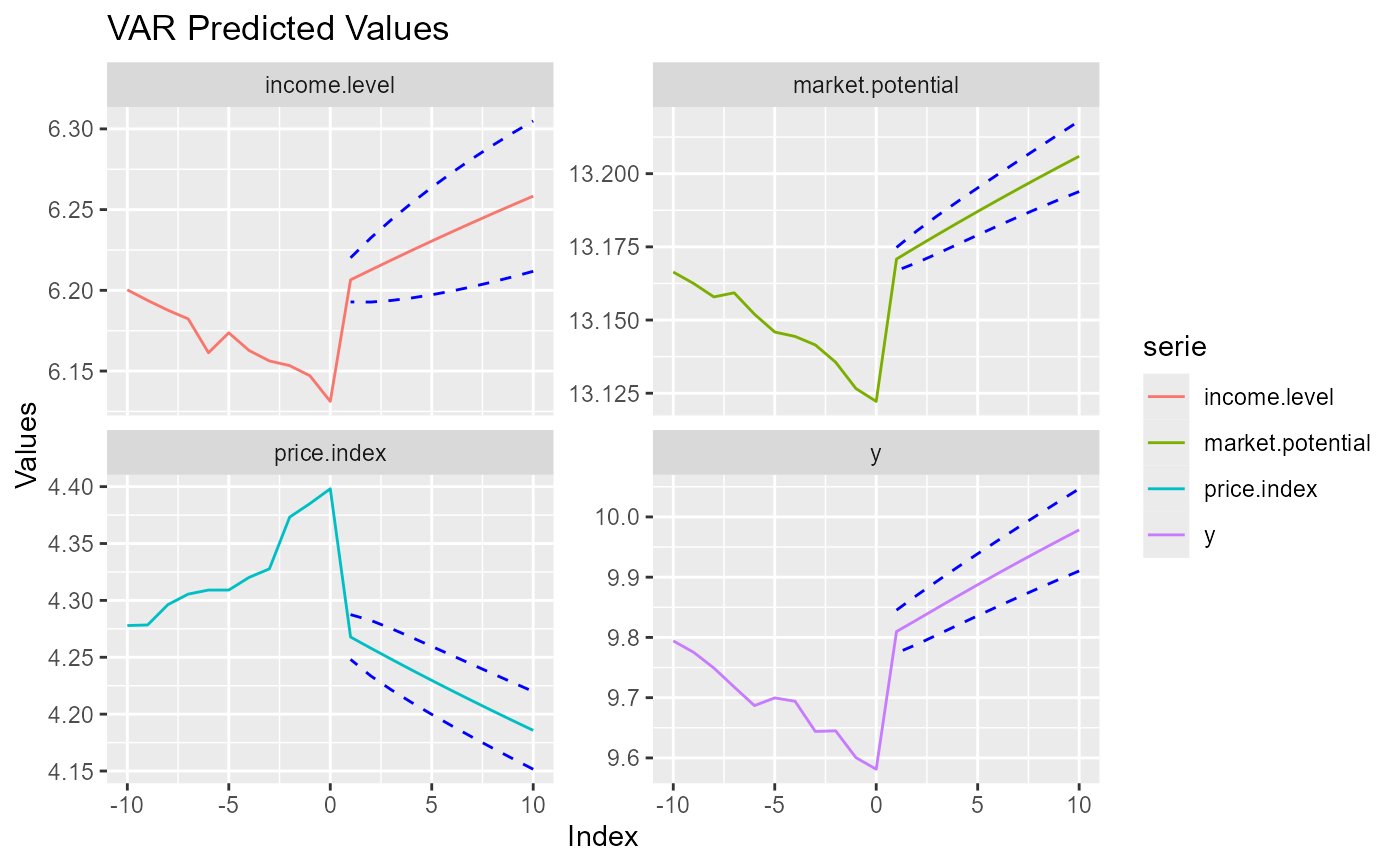Gets predictions via stats::predict and plots them. Can also plot the known values of the past.
Arguments
- x
A "varest" object to get predictions from.
- series
A character vector with series (variables) to consider. Defaults to all (
NULL).- index_ahead
A vector of labels to the x-axis, normally dates. Applied to the predicted portion of the graph. Its length will define the prediction horizon.
- index_behind
A vector of labels to the x-axis, normally dates. Applied to the original portion of the graph. Its length will define the 'past' horizon. Leave as
NULLto only plot predicted values.- ci
The confidence level for the confidence interval. Set to
FALSEto omit. Used in predict.- args_aes
Defines aesthetics to differentiate the data. A named list of aesthetics names (
*) – arguments passed toggplot2::scale_*_manual. See more in the 'Customization' section.- args_line, args_ribbon
Additional arguments passed to geom_line and geom_ribbon (respectively). See more in the 'Customization' section.
- args_labs
Additional arguments passed to labs. If an empty list, will be changed to default values.
- args_facet
Additional arguments passed to the faceting engine used.
- ...
Arguments passed to methods, see the 'Methods' section.
Value
A ggplot.
Details
Customization
The graph can be customized both with the 'static' arguments passed to each layer – using the args_* arguments –, and, if applicable, the 'dynamic' aesthetics – using the args_aes argument.
The args_aes is a list with '* = arguments to scale_*_manual \
elements, where '*' represents the name of an aesthetic to apply to the \
data. View vignette('ggplot2-specs', 'ggplot2') to see the available \
aesthetics.
After built, the result can be further customized as any ggplot, adding or overwriting layers with the ggplot's +. It is useful to understand the data and the mappings coded by the package, using the function get_gg_info.
See vignette('customizing-graphs') for more details.
Methods
The data from x is extracted with the generic function texts_vec. Each class conditions an external function to pass the ... arguments to. Below there is a list with all the currently implemented classes:
Class
'varest': passed to vars::predict.varest.
See also
Other historic values plots:
ggvar_fit(),
ggvar_history()
